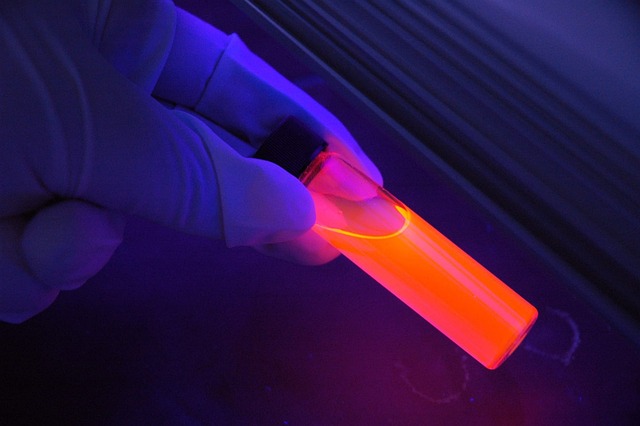by Ida Smith 30 August 2023

Mysteries, thrillers, crime, and suspense readers: If you’re like me, you not only enjoy reading, but also watching these types of stories. For some people, it’s the suspense and even fear we experience for the characters. For others, it’s trying to unravel the clues and solve the crime. I have to admit, I’ve been doing some late-night CSI crime binge watching. I’m fascinated with how the crime scene investigators find small pieces of evidence. They then use science to reveal some of the hidden information these clues hold. But what is forensics’ history and how did forensics get it’s beginnings?
I have to admit, since writing the “Crime and Forensics” feature, I’ve noticed some techniques used to reveal the secrets within the evidence. This got me thinking about all the different aspects of forensic science. I discovered that forensic science is a continually growing and developing field of study.
But what exactly is forensic science?
“Forensic science in its broadest definition is the application of science to law.” 1
Forensic science currently covers areas from crime scene investigation, blood spatter patterns, DNA, tread marks, explosives, psychology, entomology, accounting, and so much more.
A brief history of forensic science’s beginnings.
Throughout history, those desirous of justice have sought a variety of ways to determine the truth in situations of possible criminal activity. In the third century BC, Archimedes, an ancient Greek mathematician, physicist, engineer, astronomer, and inventor (287-212 BC), determined how to use volume to prove a local goldsmith had cheated the king in his creating a special crown. 2 & 3
Autopsies are not a new procedure. The first recorded autopsy was on March 15, 44 BC by Antistius, a Roman medicus, on the body of Julius Caesar after Roman senators stabbed him and he bled to death. Though Antistius found 23 stab wounds, he determined that only the wound under the left shoulder blade was fatal. He reported this to the Roman people at the Forum. “This report by the medical expert is thought to be the origin of our modern term ‘forensics.’” 4
The powers of observation and entomology were at work in the story of ancient Chinese officials using forensic science to discover and prove guilt when a 6th century farmer was murdered. A sickle, a common tool for harvesting, was the murder weapon. Lawmen could have thrown up their hands at the impossibility of finding the culprit. Instead, they gathered sickles from nearby farmers and laid them out, side-by-side. As they questioned the neighboring farmers, they observed that though no blood was seen on any of the tools, one particular sickle attracted flies, proving it to be the murder weapon. 5
Fiction played a role in the application of forensic science.
Even the famous Sir Arthur Conan Doyle, author of the popular Sherlock Holmes stories, left a huge mark on the development of forensic science. Law enforcement at the time struggled to string together random clues. But Doyle’s fictional Sherlock Holmes, “applied newly developing principles of serology…fingerprinting, firearms identification, and questioned-document examination…” 1 which popularized scientific crime-detection methods.
“One of the early pioneers in establishing forensic science as a part of the justice system was Edmund Locard of France. He established the world’s first crime lab in Paris in 1910. (NOTE: The first American crime lab was opened in Los Angeles in 1923).”
In 1910, Locard theorized what is called the “Principle of Interchange.” This basic principle of investigation says that, “when someone commits a crime, that person always leaves something behind that was not there before and/or carries away something that was not on the person when he or she arrived.” 2 It is this basic principle that forensic scientists work on when looking for clues, be they fingerprints, broken glass, fibers, bloodstains, etc.
It’s fascinating to see how the deep and ever-widening study of forensic science had its early beginnings. In a few weeks, I’ll be interviewing author and forensic scientist Greg Hickey. Hickey works in a laboratory analyzing guns, bullets and cartridge cases from gun crimes in and around Chicago. Yeah! I can’t wait! So, keep your eyes open for that email.
Copyright 2023 Ida Smith. No part of this may be sold or copied without express permission from the author.
Works cited:
- Richard Saferstin, Criminalist: An Introduction to Forensic Science 9th ed. (Saddle River, N.J.: Pearson Education, 2007) 4-5
- CMU. “Introduction to Super Sleuths” https://www.cmu.edu/gelfand/lgc-educational-media/super-sleuths/introduction.html#:~:text=One%20of%20the%20early%20pioneers,his%20%22Principle%20of%20Interchange%22 Carnegie Mellon University, Gelfand Center, (July 31, 2023)
- W. “Archimedes” https://en.wikipedia.org/wiki/Archimedes Wikipedia, July 24, 2023 (July 31, 2023)
- OAG “A history of medicolegal death investigation and forensic pathology” https://www.openaccessgovernment.org/orensic-pathology-history/130800/#:~:text=Forensic%20autopsies&text=The%20first%20report%20of%20an,a%20medicus%2C%20performed%20an%20autopsy. Open Access Government March 3, 2022 (August 1, 2023)
- FC. “A Quick History of Forensic Science: Fingerprints, DNA & Beyond” https://www.forensicscolleges.com/blog/history-of-forensics Forensics Colleges, October 23, 2020 (July 31, 2023)
Read more articles and short stories on Forensic Science at Crime & Forensics, Including:
Forensic Firearm Analysis
Accelerant Detection Canines – A Short Story – Part 1
Accelerant Detection Canines – A Short Story – Part 2
This page last updated August 30, 2023.